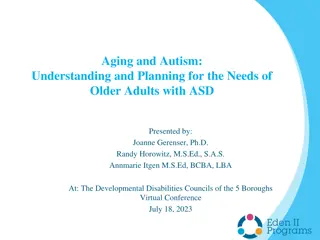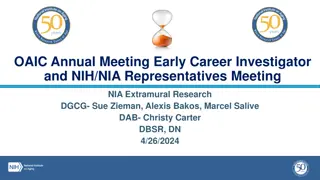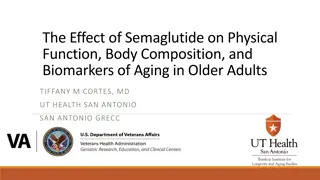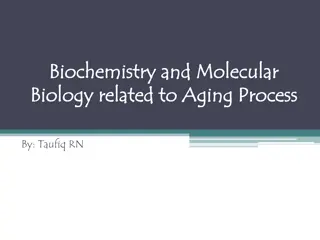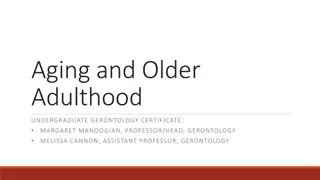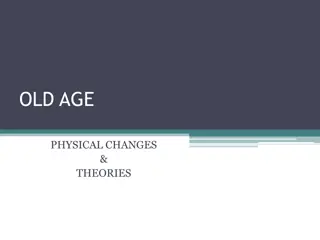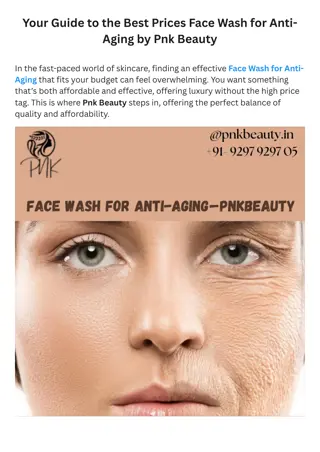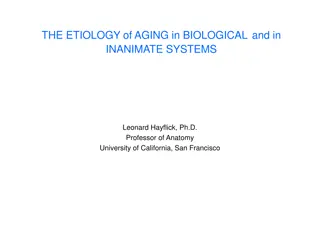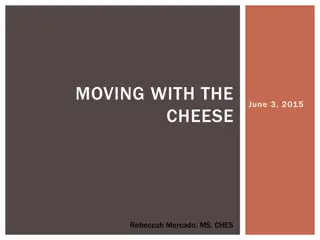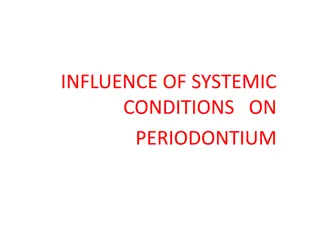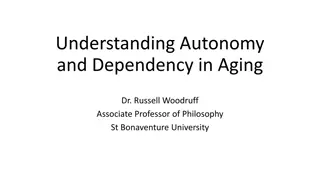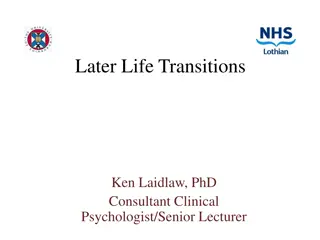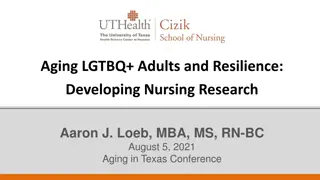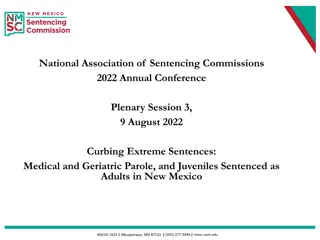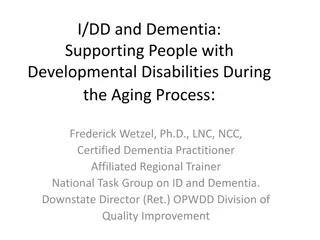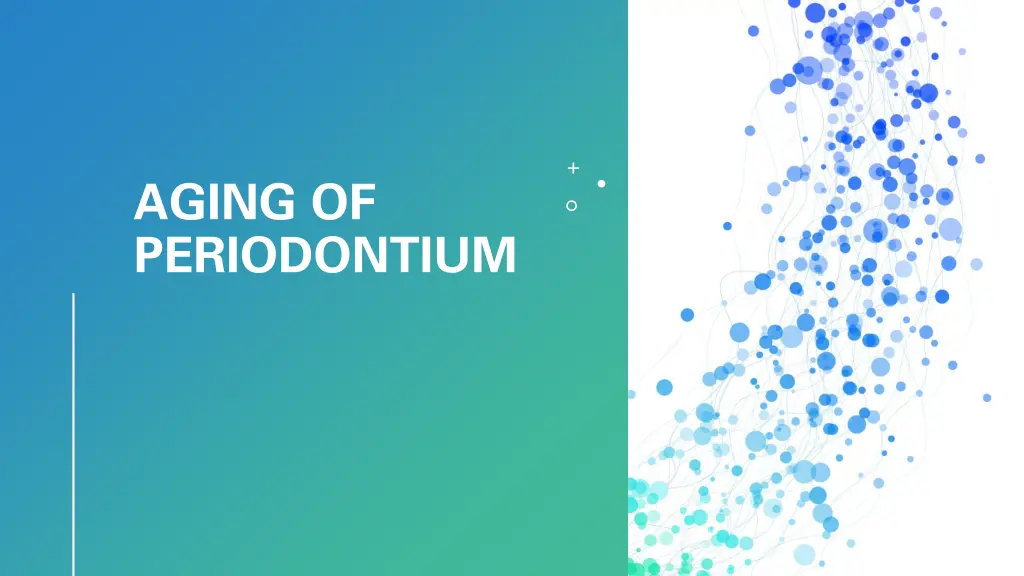
Effects of Aging on Periodontal Tissues
Discover the impacts of aging on the periodontium, including changes in gingival epithelium, junctional epithelium, connective tissue, periodontal ligament, cementum, alveolar bone, bacterial plaque, immune response, inflammatory response, progression of periodontal disease, and response to treatment. Aging brings irreversible changes that affect oral health. Explore in-depth insights on aging-related alterations in the structures of the periodontium.
Download Presentation

Please find below an Image/Link to download the presentation.
The content on the website is provided AS IS for your information and personal use only. It may not be sold, licensed, or shared on other websites without obtaining consent from the author. If you encounter any issues during the download, it is possible that the publisher has removed the file from their server.
You are allowed to download the files provided on this website for personal or commercial use, subject to the condition that they are used lawfully. All files are the property of their respective owners.
The content on the website is provided AS IS for your information and personal use only. It may not be sold, licensed, or shared on other websites without obtaining consent from the author.
E N D
Presentation Transcript
AGING OF PERIODONTIUM
CONTENT AGING EFFECT OF AGING ON GINGIVAL EPITHELIUM EFFECT OF AGING ON JUNCTIONAL EPITHELIUM EFFECT OF AGING ON GINGIVAL CONNECTIVE TISSUE EFFECT OF AGING ON PERIODONTAL LIGAMENT EFFECT OF AGING ON CEMENTUM EFFECT OF AGING ON ALVEOLAR BONE EFFECT OF AGING ON BACTERIAL PLAQUE EFFECT OF AGING ON IMMUNE AND INFLAMMATORY RESPONSE EFFECT OF AGING ON PROGRESSION OF PERIODONTAL DISEASE AGING AND RESPONSE TO TREATMENT OF PERIODONTIUM
AGING Aging is irreversible and inevitable change that occur with time Aging is the time-related deterioration of the physiological functions necessary for survival
Thinning and decreased keratinization of the gingival epithelium is reported with age It leads to a) increase in epithelial permeability to bacterial antigens, b) a decreased resistance to functional trauma, or both flattening of rete pegs, and an increase in the height of the epithelial ridge EFFECT OF AGING ON GINGIVAL EPITHELIUM
EFFECT OF AGING ON JUNCTIONAL EPITHELIUM Migration of the junctional epithelium from its position in healthy individuals (i.e., on the enamel) to a more apical position on the root surface with accompanying gingival recession The migration of the junctional epithelium to the root surface could be caused by the tooth erupting through the gingiva in an attempt to maintain occlusal contact with its opposing tooth (i.e., passive eruption) as a result of tooth surface loss from attrition Gingival recession is not an inevitable consequence of aging but is the cumulative result of trauma or periodontitis
Continued eruption resulting from attrition and tooth surface loss Occlusal plane A B C D Original gingival margin location Original cementoenamel junction Mucogingival junction The distance from the mucogingival junction to the gingival margin approximates to the width of attached gingiva.
EFFECT OF AGING ON GINGIVAL CONNECTIVE TISSUE Qualitative and quantitative changes to collagen have been reported. These include : QUALITATIVE CHANGES a) increased rate of conversion of soluble to insoluble collagen b) increased mechanical strength c) Increased denaturing temperature QUANTITATIVE CHANGES a) an increased collagen content
EFFECT OF AGING ON PERIODONTAL LIGAMENT Decreased numbers of fibroblasts More irregular structure Decreased organic matrix production, epithelial cell rests, Increased amounts of elastic fiber Width of the periodontal ligament probably reflects the functional status of the teeth the width of the space will decrease if the tooth is unopposed (i.e., hypofunction) or increase with excessive occlusal loading
EFFECT OF AGING ON CEMENTUM Increase in cemental width is a common finding This increase is 5 to 10 times with increasing age The increase in width is greater apically and lingually increasing surface irregularity
EFFECT OF AGING ON ALVEOLAR BONE Decreased vascularity Reduction in metabolic rate and healing capacity Resorption activity is increased and the Rate of bone formation is decreased
OPG SHOWING ALVEOLAR BONE LEVEL OF HEALTY YOUNG ADULT
OPG SHOWING ALVEOLAR BONE LEVEL OF HEALTHY 70 YEAR OLD PATIENT
EFFECT OF AGING ON BACTERIAL PLAQUE Dentogingival plaque accumulation increases with age For supragingival plaque, no real qualitative differences have been shown for plaque composition The most significant age-related change in the subgingival microbiota of healthy older individuals compared to young was an increase in Actinomyces species
EFFECT OF AGING ON IMMUNE AND INFLAMMATORY RESPONSE Immune cells critical for host defense and inflammatory regulation to maintain periodontal health are a) neutrophils b) macrophages, c) and T cells Immune cells have demonstrated age-related changes that may contribute to the increased prevalence of disease in older populations
EFFECT OF AGING ON NEUTROPHIL : a) Bacterial phagocytosis by neutrophils is decreased with age b) formation of neutrophil extracellular traps, a mechanism for trapping and killing bacterial extracellularly, is decreased with increasing age EFFECT OF AGING ON MACROPHAGES : a) macrophages are key regulators of inflammation in periodontal diseases b) respond early during infection to propagate inflammation c) are also present later to actively resolve inflammation. d) Intrinsic age-related changes appear to shift the macrophage toward a more pro-inflammatory (M1-type) phenotype
EFFECT OF AGING ON T CELLS a) Subsets of T cells are implicated in the pathogenesis of periodontitis b) With increased age, T-cell differentiation is promoted toward T helper 1 (Th1) cells. c) Th1 cells demonstrate pro-inflammatory cytokine expression and are associated with increased bone resorption d) Another pathogenic subset of T cells involved in periodontitis is TH- 17 cell e) TH-17 cell produce pro inflammatory cytokine IL-17 f) Increased TH-17 cell are found in circulationg blood sample of old patients
T Cells Expanded pathogenic subpopulations -Increased T helper 1 cell expansion -Increased Th17 cell expansion Macrophages Promotion of pro-inflammatory phenotype -Shift towards M1-like gene signature -Increased pro-inflammatory cytokine expression Neutrophils Attenuated antimicrobial activity Decreased phagocytosis -Decreased NET formation
EFFECT OF AGING ON PROGRESSION OF PERIODONTAL DISEASE A more recent study modeling the transition of periodontal health states over a 2-year period estimated that the risk of transiting from health to gingivitis was overall reduced by3% with age In a classic experimental gingivitis study, subjects were rendered free of plaque and inflammation through frequent professional cleaning. After this was achieved, the subjects abstained from oral hygiene measures for periods of 3 weeks to allow gingivitis to develop. In this experimental model, a comparison of developing gingivitis between younger and older individuals demonstrated a greater inflammatory response in older subjects, in humans
.In the older age group (i.e., 65 to 80 years), the findings included a) a greater amount of infiltrated connective tissue, b) increased gingival crevicular fluid flow c) an increased gingival index. Other studies have not demonstrated differences between subjects; this may be related to smaller differences between the ages of the younger and older experimental groups
AGING AND RESPONSE TO TREATMENT OF PERIODONTIUM few studies that have done so clearly demonstrate that, despite the histologic changes in the periodontium with aging, no differences in response to nonsurgical or surgical treatment have been shown for periodontitis without effective periodontal therapy, the progression of disease may be faster with increasing age
QUIZ Q) What is the effect of aging on gingival epithelium ? Q)Which species are increased in bacterial plaque of old patient ? Q) With age T cell differentiation is promoted towards which cell ?
REFERENCES NEWMAN AND CARRANZA S CLINICAL PERIODONTOLOGY AND IMPLANTOLOGY 14th EDITION International Journal of Dentistry and Oral Science (IJDOS) ISSN: 2377-8075

